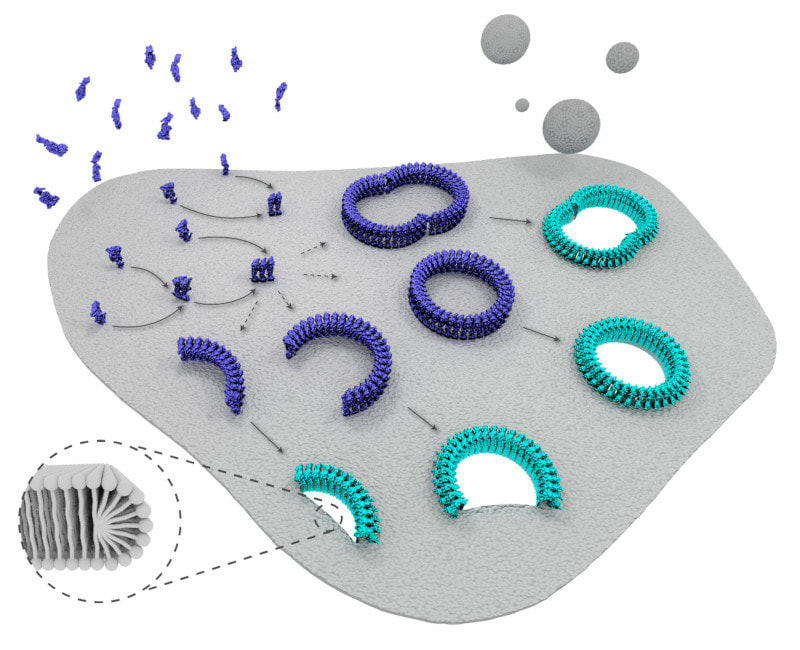Pore Forming Proteins
|
Pore-forming proteins are crucial armaments in the continuous battle between organisms and their pathogens. In the course of their function, they assemble into oligomeric rings that puncture holes through target membranes, as illustrated here for cholesterol dependent cytolysins. Bacterial toxins are pore-forming proteins that penetrate host cell membranes to release nutrients for the bacteria, thus invading or killing the host cells, for example in bacterial pneumonia or meningitis.
|
|
Pore forming proteins also play important roles in our immune system. E.g., our blood contains pore forming proteins that can form membrane attack complexes (MACs, see movie) to kill Gram-negative bacteria. In addition, natural killer cells and killer T cells rely on a pore forming protein called perforin to eliminate virus-infected and cancerous cells. That is, perforin is also a key effector in immune therapies that rely on 'CAR-T cells' to cure cancer. For our work on pore forming proteins, we rely on an extensive network of collaborators, including structural biologists, microbiologists and cancer immunologists.
|
|
Selected Publications
- J. A. Rudd-Schmidt, A. W. Hodel, T. Noori, J. A. Lopez, H.-J. Cho, S. Verschoor, A. Ciccone, J. A. Trapani, B. W. Hoogenboom and I. Voskoboinik, Nature Communications 2019, 10, 5396
- E. S. Parsons, G. J. Stanley, A. L. B. Pyne, A. W. Hodel, A. P. Nievergelt, A. Menny, A. R. Yon, A. Rowley, R. P. Richter, G. E. Fantner, D. Bubeck and B. W. Hoogenboom, Nature Communications 2019, 10, 2066
- C. Leung, A. W. Hodel, A. J. Brennan, N. Lukoyanova, S. Tran, C. M. House, S. C. Kondos, J. C. Whisstock, M. A. Dunstone, J. A. Trapani, I. Voskoboinik, H. R. Saibil and B. W. Hoogenboom, Nature Nanotechnology, 2017, 12, 467–473
- C. Leung, N. V. Dudkina, N. Lukoyanova, A. W Hodel, I. Farabella, A. P. Pandurangan, N. Jahan, M. P. Damaso, D. Osmanović, C. F. Reboul, M. A. Dunstone, P. W. Andrew, R. Lonnen, M. Topf H. R. Saibil and B. W. Hoogenboom, eLife, 2014, 3, e04247

